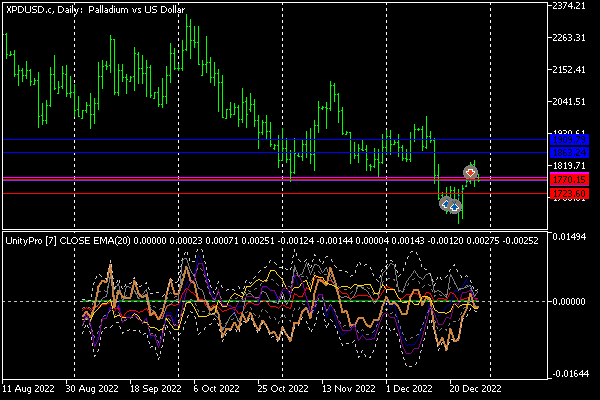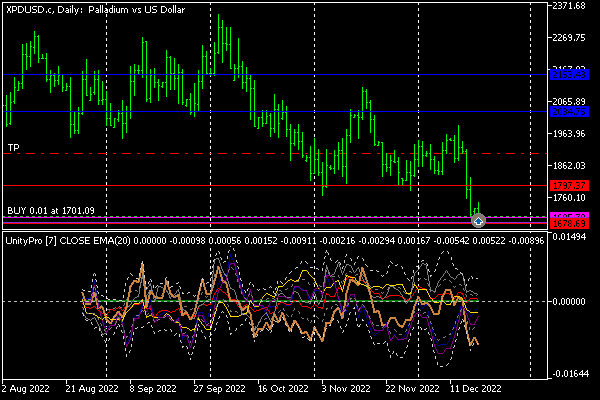Stanislav Korotky / Profil
- Informations
|
11+ années
expérience
|
97
produits
|
140
versions de démo
|
|
0
offres d’emploi
|
0
signaux
|
0
les abonnés
|
New:
AngryVolumes - (MT5) https://www.mql5.com/en/market/product/96161
VolumeDeltaPercentRange - (MT5) https://www.mql5.com/en/market/product/62190
PnFxo - (MT5) https://www.mql5.com/en/market/product/61592
MACD Advanced - (MT5) https://www.mql5.com/en/market/product/61515
PFKBreakOut - (MT5) https://www.mql5.com/en/market/product/61170
PointFigureKagiCharts - (MT5) https://www.mql5.com/en/market/product/61168
PointFigureKagiCharts - [demo] https://www.mql5.com/en/market/product/61169
CustomVolumeDelta - (MT5) https://www.mql5.com/en/market/product/60798
RenkoFromRealTicks - (MT5) https://www.mql5.com/en/market/product/60797
RenkoFromRealTicks - [demo] https://www.mql5.com/en/market/product/60824
UniversalDashboard - (MT5) https://www.mql5.com/en/market/product/59610
VolumeDeltaWaves - (MT5) https://www.mql5.com/en/market/product/54183
AutomaticZigZag - (MT5) https://www.mql5.com/en/market/product/54123
VolumeDeltaScanner - (MT5) https://www.mql5.com/en/market/product/53549
ADXSignal - (MT5) https://www.mql5.com/en/market/product/50861
CyclicPatterns - (MT5) https://www.mql5.com/en/market/product/40547
Latest Updates:
WalkForwardOptimizer 1.15 - (MT5) https://www.mql5.com/en/market/product/23068
TrueVolumeSurrogate 1.4 - (MT5) https://www.mql5.com/en/market/product/18319
VolumeDeltaM1 1.6 - (MT5) https://www.mql5.com/en/market/product/18307
Most popular products, user choice:
VolumeDelta
+ (MT4) https://www.mql5.com/en/market/product/5102
+ (MT5) https://www.mql5.com/en/market/product/18307
CumulativeVolumeDeltaBars
+ (MT4) https://www.mql5.com/en/market/product/18285
+ (MT5) https://www.mql5.com/en/market/product/18238
TrueVolumeSurrogate
+ (MT4) https://www.mql5.com/en/market/product/5380
+ (MT5) https://www.mql5.com/en/market/product/18319
WalkForwardOptimizer
+ (MT4) https://www.mql5.com/en/market/product/17683
+ (MT5) https://www.mql5.com/en/market/product/23068
VolumeDeltaM1
+ (MT4) https://www.mql5.com/en/market/product/13353
+ (MT5) https://www.mql5.com/en/market/product/18307
OnBalanceVolumeSurrogate
+ (MT4) https://www.mql5.com/en/market/product/8531
+ (MT5) https://www.mql5.com/en/market/product/18320
OrderBook History Library
+ (MT5) https://www.mql5.com/en/market/product/30681
RenkoTradingBot
+ (MT4) https://www.mql5.com/en/market/product/9170
ADXS/ADXSignal
+ (MT4) https://www.mql5.com/en/market/product/5052
+ (MT5) https://www.mql5.com/en/market/product/50861
Please note: if I'm banned due to inadequate judgment of specific MetaQuotes' staff, my actions on the site are very limited and I can not afford proper support for my products.
This indicator emulates volume delta (buy trades vs sell trades) based on per candle volume and candle shape (direction, size of body and wicks). Artificially separated buy and sell volumes then accumulated for specified number of bars. The indicator shows a histogram of volume delta per bar, as well as a sum of the delta for the given period. What is more important, the indicator allows you to combine current symbol quotes/volumes with quotes/volumes of other related symbols (futures, indices
The article describes the theory and practice of applying the backpropagation algorithm in MQL5 using matrices. It provides ready-made classes along with script, indicator and Expert Advisor examples.
This indicator provides an original mix of WPR, VSA, and volume delta. It shows ratio of buy/sell volumes scaled on 100% range based on total volume change for a selected period. The convetional VSA (Volume Spread Analysis) studies interconnections of price action and volume change in absolute values, whereas WPR (Williams Percent Range) offers a convenient approach of price moves normalization into the fixed percentage metric: 0 - 100%. Hence overbough and oversold states are easily spotted
This is a bufferless indicator which can display classical X and O columns if applied on custom symbol charts built by Point-And-Figure-like generator PointFigureKagiCharts or its DEMO . The indicator will enforce a fixed price-scale on the chart to make sure the marks keep correct aspect ratio. The marks are shown only if the chart time-scale is large enough to hold them in the space allocated per bar (if the horizontal scale is one of 3 smallest ones, the indicator draws nothing and outputs a
This indicator provides you with MACD formula applied to volume-aware Accumulation/Distribution and OnBalance Volumes indicators. In addition to tick volumes it supports special pseudo-real volumes, synthesized for Forex symbols where real volumes are unknown. More details on the volume surrogates may be found in description of another indicators - TrueVolumeSurrogate and OnBalanceVolumeSurrogate (algorithm of the latter is used internally in MACDAD for AD and OBV calculation before they
This indicator displays breakouts on Point-And-Figure-like or Kagi-like custom symbol charts, generated by special expert advisers, such as PointFigureKagiCharts . This indicator is applicable only for custom instruments generated in appropriate way (with time-invariant bars which are multiples of a predefined box size). It makes no sense to apply it to other charts. The breakouts in up or down direction are marked by arrows. The breakout price is found at crossing of one of imaginary lines of
This non-trading expert utilizes so called custom symbols feature to build custom charts based on history of real ticks of selected standard symbol. New charts imitate one of well-known graphic structures: Point-And-Figure (PnF) or Kagi. The result is not exactly PnF's X/O columns or rectangular waves of Kagi. Instead it consists of bars, calculated from and denoting stable unidirectional price moves (as multiples of the box size), which is equivalent to XO columns or polygonal lines. These
This non-trading expert utilizes so called custom symbols feature ( available in MQL API as well) to build custom charts based on history of real ticks of selected standard symbol. New charts imitate one of well-known graphic structures: Point-And-Figure (PnF) or Kagi. The result is not exactly PnF's X/O columns or rectangular waves of Kagi. Instead it consists of bars, calculated from and denoting stable unidirectional price moves (as multiples of the box size), which is equivalent to XO








